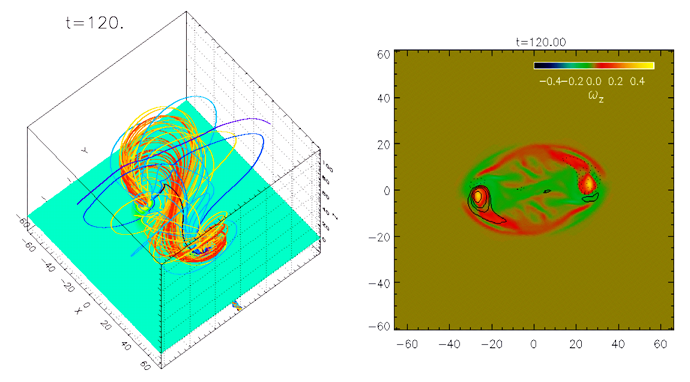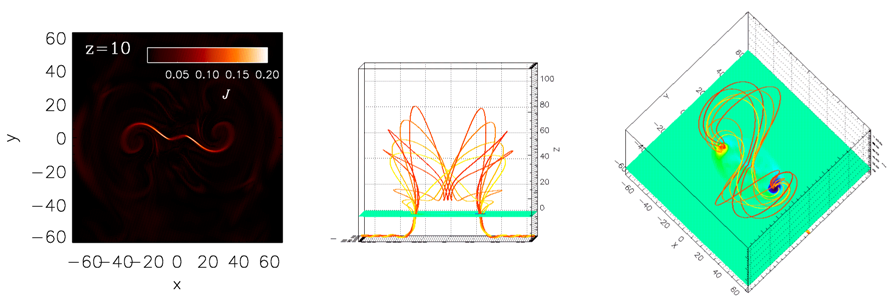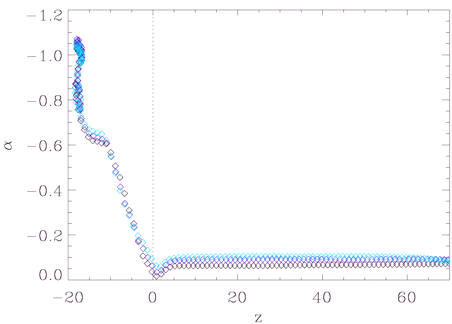Understanding how twisted magnetic fields emerge from the dense, convectively unstable solar convection zone into the stably stratified, rarefied solar atmosphere and corona is fundamentally important for understanding the formation of solar active regions and the development of precursor structures for solar eruptions such as flares and coronal mass ejections.
Fan (2009) has carried out 3D MHD simulations of the dynamic emergence of a twisted flux tube from the top layer of the convection zone into the solar atmosphere and corona. It is found that after an initial stage of flux emergence, during which the two polarity flux concentrations on the photosphere undergo a shearing motion and become separated, a prominent rotational/vortical motion develops within each polarity, reminiscent of sunspot rotations. This rotational motion persists throughout the subsequent evolution and steadily transports magnetic energy and twist into the atmosphere. It is shown that the initial shearing and the subsequent rotational motions of the two polarity flux concentrations twist up the inner field lines of the emerged field (near and include the original tube axis), causing them to rotate in the atmosphere from an initial normal configuration (i.e. arching over the polarity inversion line from the positive to the negative polarity), into an inverse configuration (i.e. directed from the negative polarity to the positive polarity over the neutral line). As a result, a flux rope with sigmoid-shaped, dipped core fields form in the corona, and the center of the flux rope rises in the corona with increasing velocity as the twisting of the flux rope footpoints continues.
It is shown that the rotational motions of two polarity flux concentrations on the photosphere are a manifestation of nonlinear torsional Alfven waves propagating along the flux tube, consistent with what has been predicted by an idealized analytical model (Longcope and Welsch2000). Due to the rapid stretching of the emerged magnetic field in the atmosphere and corona, the rate of twist per unit length along the coronal field lines drastically decreases. As a result, a gradient of the rate of twist is established along the flux tube from the interior into the atmosphere with the interior portion of the flux tube having a much higher rate of twist.
This gradient in the rate of twist drives torsional waves along the flux tube, transporting twist from the interior highly twisted portion into the expanded coronal portion (Longcope and Welsch 2000}. Thus the rotational motion will continue until the coronal twist rate equilibrates with the interior twist rate along the field lines. The time scale for establishing the equilibrium is on the order of the Alfven transient time along the interior flux tube, which means that the rotational motion can persists for a few days after the initial emergence. Sunspot rotations have been observed in many events preceding X-ray sigmoid brightening and the onset of eruptive flares (e.g. Brown et al. 2003, zhang et al. 2008). Our simulations suggest that these rotational motions are due to non-linear torsional Alfven waves naturally occurring during the emergence of a twisted flux tube, and is an important means whereby twist is transported from the interior into the corona, driving the development of a coronal flux rope as a precursor structure for solar eruptions.


